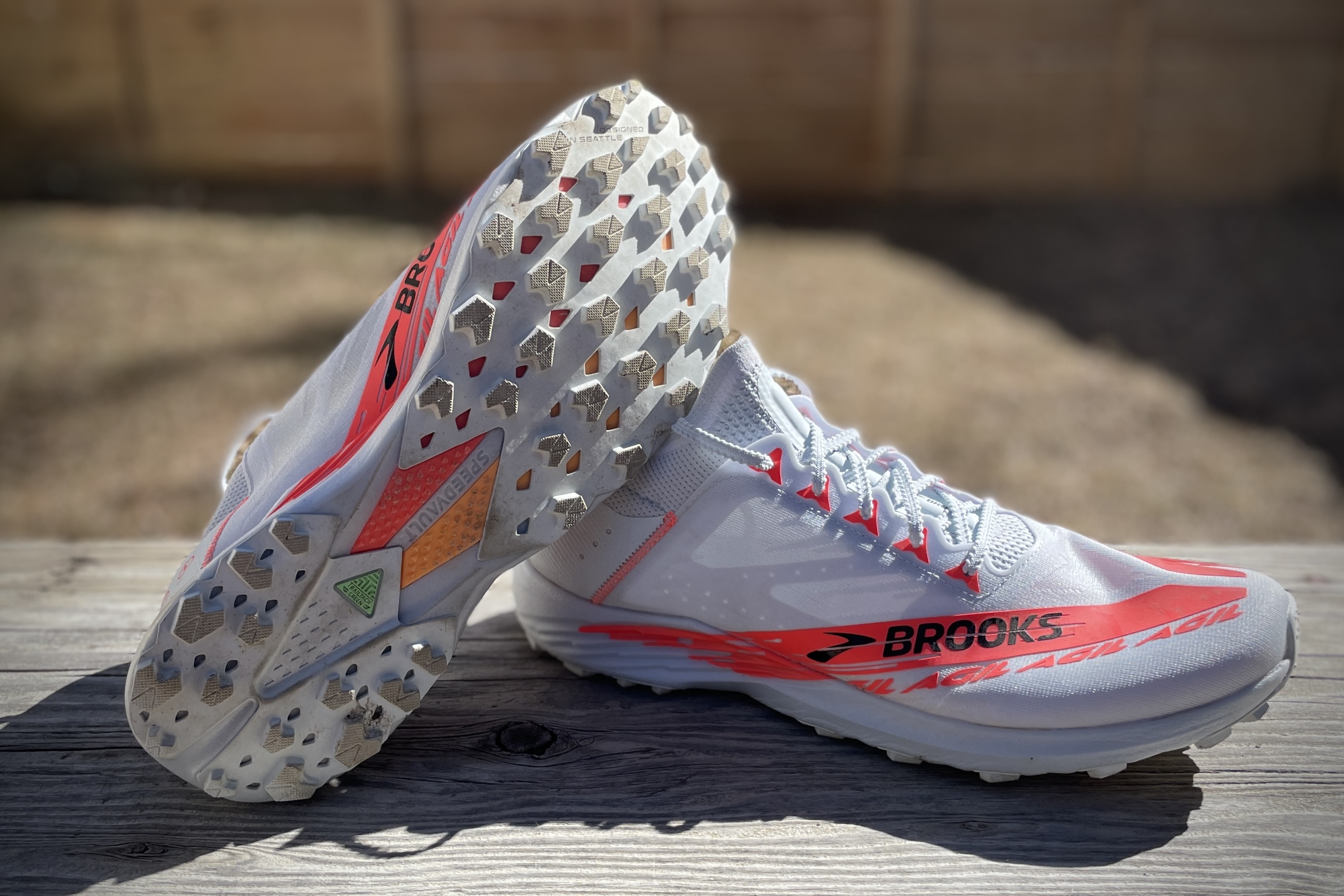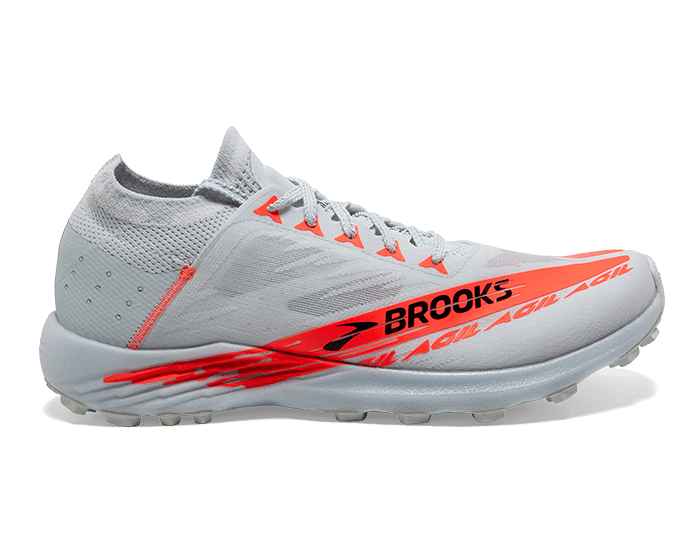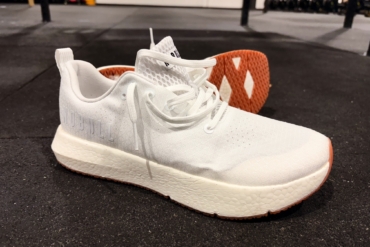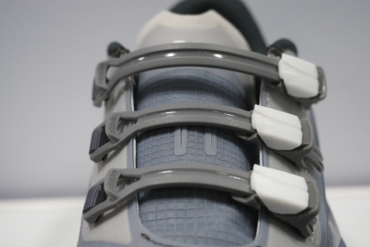Released today, the Brooks Catamount Agil is — by the brand’s own account — its “fastest trail shoe, ever.” After our prerelease testing, we concur. The shoe packs in the tech and performs like a rocket. Brooks intends it for the growing number of trail runners who identify more closely with severe elevation gain over fewer miles compared to long, ambling “ultra slogs.”
Ten years ago, I started drafting a book I dubbed “Trail Running Is Not Ultrarunning.” I wanted it to prop up the kind of trail running I did: short, fast, and technical. This is the kind of racing the Europeans have been doing for over 50 years, not the uber-American “bigger is better” running mentality that birthed 100-milers. My book would also address the most common question I received when I told people I ran on trails: “So, you’re an ultrarunner?”
While I abandoned the book, the current crop of trail runners appears to be embracing the sort of “sub-ultra” trail running I was aiming at. Short, fast, technical: this is the running I’m passionate about, and the type of running that Brooks’ Catamount Agil is perfect for.
In short: The Brooks Catamount Agil is the weapon short-distance trail runners need to set PRs, steal crowns, and use to race for 1-2 hours (or way less). The super shoe tech that is rocking the road running world — carbon plates, supercritical foams, and mystifyingly low weights — is coming to trail shoes. The Catamount Agil puts these technologies front and center, with some major firsts for Brooks.
- Materials: Mesh upper, articulated SpeedVault Trail Plate (Pebax), TrailTack Green outsole, nitrogen-infused DNA FLASH v2 midsole
- Midsole height: 16 mm to 10 mm
- Midsole drop: 6 mm
- Lug height: 4.5 mm
- Weight: 7.7 oz. (size 9)
- Sizes: Men's 5-13 / women's 6-14
- Price: $180
- Available: March 1, 2024
Pros
- Very fast
- Incredible pairing of a Pebax plate and nitrogen-infused midsole
- Precise fit without being too constricting
- Deep lugs provide confidence when racing downhill
- Recycled materials, certified Carbon Neutrality
Cons
- Limited appeal to runners accustomed to more cushioning and stability
- Only one size (10) available in wide fit
Brooks Catamount Agil First Look Review
Catamount Iterations and Design
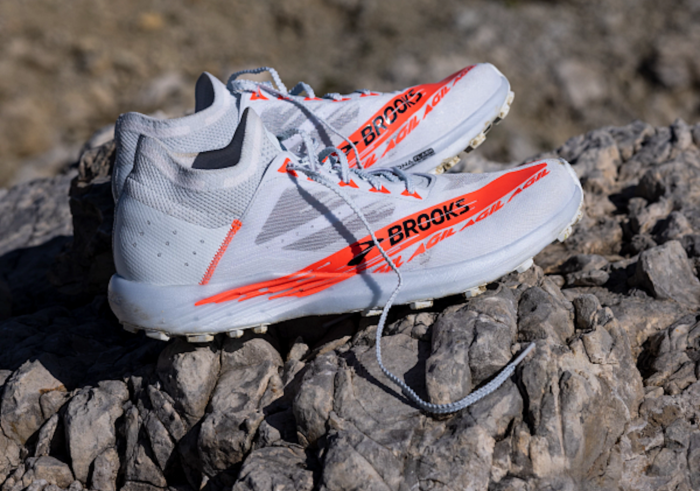
The “Catamount” line is now three seasons deep, with the Catamount 3 being the latest. Where the Catamount Agil departs from standard Catamount is in its stack volume (22-to-16 in the Catamount 3 vs. 16-to-10 in the Catamount Agil), new midsole and plate materials (the SpeedVault Trail plate vs. the Catamount 3’s SkyVault trail plate), and a beefed-up lug depth (3.5 in Catamount 3 vs 4.5 in Catamount Agil).
But in running shoes now, the midsole is where the real magic is happening. And the Catamount Agil has two excellent aspects: the SpeedVault Trail Plate and the DNA FLASH v2 foam.
The SpeedVault Plate is similar to the one Brooks uses in its 2024 Hyperion Elite v4 road racing shoe. But, it’s modified for trail running. The main difference is the Hyperion Elite v4 uses a thin, ultralight carbon fiber plate which is custom-sized for each shoe. The carbon plate tries to minimize the weight of the plate and optimize the way it bends.
On the flip side in the Catamount Agil, Brooks opted for a Pebax plate. Pebax tends to be lighter and a bit more supportive than carbon fiber. It’s a polymer derived from castor beans, and it’s way less environmentally detrimental compared to carbon. Whether Pebax is more forgiving than carbon for trail running remains to be seen, but it’s certainly becoming the preferred plate material for road shoes.
Catamount Agil in Testing
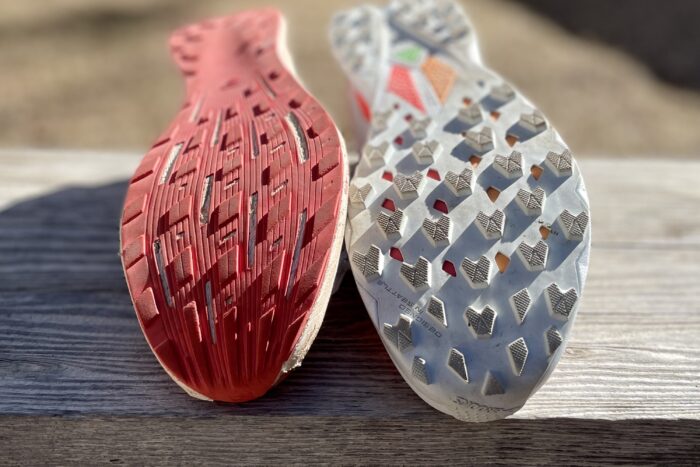
As a shoe marketed squarely for “races under 50K,” this falls among the ranks of the Salomon Pulsar, Arc’teryx Norvan SL, and Merrell MTL Skyfire 2 — all superlight, super fast, and often coming with a disclaimer for intended use.
I’ve tested 20+ plated shoes, and while many share the same high-velocity sensation of the Catamount Agil, what really matters is how the shoe can curve and bend with you depending on the underfoot conditions. This shoe happily absorbs the side-to-side motion that comes with turning corners on switchbacks or going quickly laterally to avoid rocks or roots in the trail.
Its harmony between the Pebax plate and stability is likely down to the foam that sits on top of it. Many brands nail the plate tech, but then fail on the foam or stack height. The Catamount’s nitrogen-infused DNA FLASH v2 midsole (another carryover from their road lineup) is a nice balance of cush and firmness. Brooks says it delivers 10% more energy return than the previous version (in the Catamount 3).
Things get a little interesting when you look at the Catamount Agil outsole.
For the pared-down stack volume, upper, and stack height, the deep 4.5mm lugs are an interesting choice. Standing in place, you can sort of rock your feet side to side and notice a slight tippy sensation, as these stout lugs sit atop a close-to-the-ground midsole.
The intention is to create a bomber downhill experience. The lugs will grip to anything you throw at it, yet don’t sacrifice grip for speed. I appreciate this, as many lightweight trail shoes offer a meek outsole (see the Pulsar 2), which can kill confidence on fast descents.
Brooks Catamount Agil: My Verdict So Far
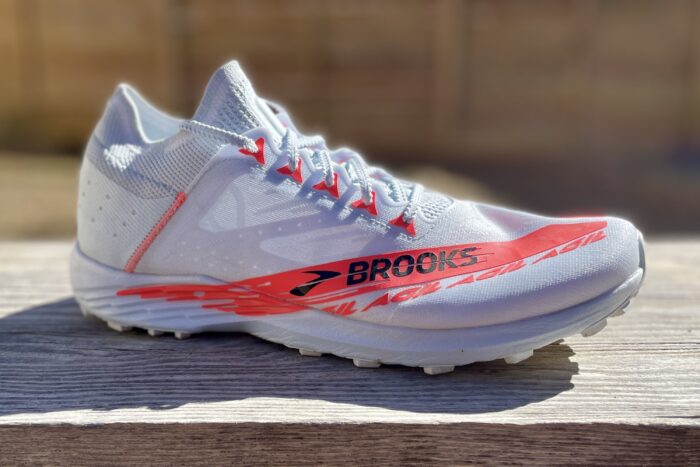
My wide feet have been a problem for Brooks in the past. Thankfully, the Catamount Agil’s pared-down upper has a fairly accommodating fit while feeling very precise. It uses a lightweight mesh and contours to the foot for a “second-skin” feel, thanks to the one-piece design that creates a sock-like fit.
The laces are perforated, similar to The North Face’s latest Vectiv Sky trail shoes — a change I appreciate, as the laces lock down much more effectively. Overall, the fit and comfort follow the same successes this shoe achieves in performance.
With the new Catamount Agil, Brooks has met the latent demand for trail runners who don’t identify as “ultrarunners” — we want to go as fast as possible with a shoe designed for trail marathons, VKs, and 10Ks. The final word: This Brooks Catamount Agil is a welcome addition to the growing selection of short-distance trail shoes.
